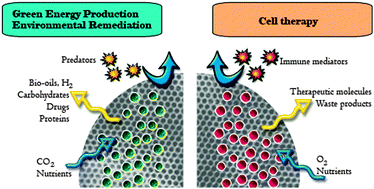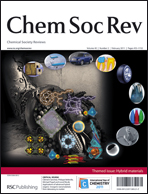This critical review highlights the advances that have been made over recent years in the domain of whole-cell immobilisation and encapsulation for applications relating to the environment and human health, particularly focusing on examples of photosynthetic plant cells, bacteria and algae as well as animal cells. Evidence that encapsulated photosynthetic cells remain active in terms of CO2 sequestration and biotransformation (solar driven conversion of CO2 into biofuels, drugs, fine chemicals etc.), coupled with the most recent advances made in the field of cell therapy, reveals the need to develop novel devices based on the preservation of living cells within abiotic porous frameworks. This review shall corroborate this statement by selecting precise examples that unambiguously demonstrate the necessity and the benefits of such smart materials. As will be described, the handling and exploitation of photosynthetic cells are enhanced by entrapment or encapsulation since the cells are physically separated from the liquid medium, thereby facilitating the recovery of the metabolites produced. In the case of animal cells, their encapsulation within a matrix is essential in order to create a physical barrier that can protect the cells auto-immune defenders upon implantation into a living body. For these two research axes, the key parameters that have to be kept in mind when designing hybrid materials will be identified, concentrating on essential aspects such as biocompatibility, mechanical strength and controlled porosity (264 references).

You have access to this article
 Please wait while we load your content...
Something went wrong. Try again?
Please wait while we load your content...
Something went wrong. Try again?


 Please wait while we load your content...
Please wait while we load your content...